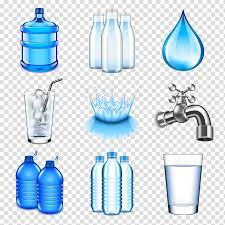In 2013, the Centers for Disease Control and Prevention (CDC) analyzed data gotten from the survey on Food and Attitudes and Behaviors conducted by the National Cancer Institute in 2007. Their findings were:-
Out of 3,397 adults, they found that:
- 7 % reported no daily consumption of drinking water.
- 36 % reported drinking 1-3 cups of drinking water daily.
- 35 % reported drinking 4-7 cups of drinking water daily.
- 22 % reported drinking 8 cups or more daily.
From the above data, it shows that seven percent of respondents reported drinking no water at all daily, and the same set of people who drank a low volume of water also consumed less fruit and vegetables. These types of people might think that they’re living healthy, not knowing that they are risking their health by not getting enough fluid.

The basic requirement for water intake may be met by drinking ordinary water or via foods and other beverages. But it is ideal that water intake daily should be more than any form of caloric sweetened beverages and other fluid intakes.
What Is The Recommended Intake
Daily water consumption can be influenced by atmospheric conditions. In a hot atmospheric climate, you tend to drink more water which helps in regulating body temperature. And the reverse is the case during cold climates. Also, the consumption rate of water by each individual varies from person to person. The activity level of each person and how much they sweat also contribute to the rate of an individual’s water consumption. Other factors that affect water consumption are:-
- Age
- Body size
- Temperature
- Humidity
- Sun exposure
- Health status
Though there is no scientifically fixed quantity of water that is met to be consumed daily. But according to the U.S. National Academies of Sciences, Medicine, and Engineering, the average recommended daily intake of water from both food and drink is:
- For men: Around 3.7 liters or 125 ounces daily.
- For women: Around 2.7 liters or 91 ounces daily.
It is advisable to measure the liters of water in a cup or jar so that you will know approximately how much water you will consume using the cup or jar available to you. Depending on the cup, it might be around 15.5 cups for men and 11 cups for women. 80 percent of this comes from drinks, including water while the rest will come from food.
What Are The Best Times To Drink Plenty Of Water?
- Any time you have a fever
- During hot weather
- During health challenges like diarrhea and vomiting
- During any form of physical activity
What You Need To Know About Water:
- Babies and children naturally have more water in their system than adults. The water content of babies when they are born is about 78%, but by the age of 1 year old, this falls to 65%.
- Water content is more in fatty tissue than in lean tissue.
- The percentage of water content in men is higher than that of women.
- The percentage of water in our blood is 90% while every adult has around 60% water content in their system.
- The quantity of water that must be consumed daily has not been universally agreed upon.
- For kidneys and other body organs to function properly, water is necessary.
- Water prevents dehydration and the skin can become more vulnerable to skin disorders and wrinkling when the body is dehydrated.
- Drinking water adequately helps to achieve weight loss.
Drinking Water First Thing in the Morning
Drinking water when the climate is hot or when one has just been through physical activity is good, but the best time and the one most effective that most people are missing out on is drinking water in the morning on an empty stomach.
You can Increase Your Water Intake Using The Following Tips
- Try to drink at least one 8-ounce glass of water with each meal.
- Don’t be far from drinkable water. Try to carry water along with you in a reusable water bottle.
- Don’t fail to drink water during or after exercise or physical activity
- Try to drink water when it is warm, humid, or very sunny.
- Try to keep a glass of water ready near the bed.
- Water intake can be increased when you consume more soups and liquid-rich meals, such as curries, stews, and smoothies.
- Consuming fruits and vegetables like berries, grapes, melons, tomatoes, celery, cucumber, and lettuce with high water content helps increase water intake.